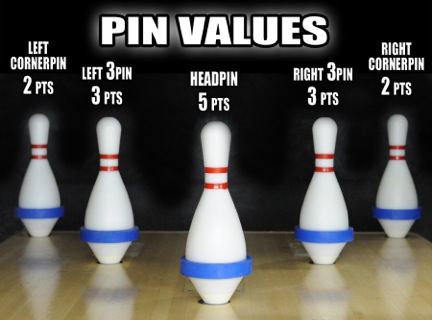A Guide to Understanding Bowling Notation
Introduction
When it comes to bowling, it’s not just about knocking down pins. Understanding your score is an essential part of the game. Bowling notation, also known as scoring, is a system that helps you keep track of your progress and calculate your final score. In this blog post, we will explore the basics of bowling notation and how to read and understand your score on the screen.
The Basics of Bowling Notation
Bowling notation uses a combination of symbols and numbers to represent your performance in each frame. Here are the key elements of bowling notation:
Frames
A game of bowling consists of ten frames. Each frame gives you the opportunity to roll the ball twice, with the exception of the tenth frame, where you can roll up to three times if you score a strike or a spare. The scores for each frame are recorded from left to right.
Pins
The number of pins you knock down on your first roll is represented by a number. If you knock down all ten pins with your first roll, it’s called a strike and is represented by an “X”. If you don’t knock down all the pins with your first roll, the number of pins you knock down is recorded. The second roll is represented by a “/” if you knock down all the remaining pins, which is called a spare.
Bonus Rolls
In the tenth frame, you have the opportunity to roll the ball up to three times if you score a strike or a spare. The score for the bonus rolls is added to the final score of the frame.
Reading and Understanding Your Score
Now that we have covered the basics of bowling notation, let’s look at how to read and understand your score on the screen.
Example Score Sheet
Here’s an example of a score sheet:
Frame 1 2 3 4 5 6 7 8 9 10 Pins X 7/ 9- X -8 8/ -6 X X X 9/8 Score 20 39 48 66 74 84 90 120 150 168
Interpreting the Score Sheet
Let’s break down the example score sheet:
In the first frame, the player scored a strike (X), knocking down all ten pins. The score for the frame is 20 because the strike is worth 10 points, plus the next two rolls, which were both strikes.
In the second frame, the player scored a spare (7/), knocking down seven pins on the first roll and three pins on the second roll. The score for the frame is 39 because the spare is worth 10 points, plus the next roll, which was a strike.
In the third frame, the player knocked down nine pins on the first roll and missed on the second roll (9-). The score for the frame is 48.
In the fourth frame, the player scored a strike (X), followed by knocking down eight pins on the first roll of the fifth frame (-8). The score for the fourth frame is 66 because the strike is worth 10 points, plus the next two rolls, which were eight and a spare.
In the sixth frame, the player knocked down eight pins on the first roll and knocked down the remaining two pins on the second roll (8/). The score for the frame is 84 because the spare is worth 10 points, plus the next roll, which was a six.
In the seventh frame, the player missed the first roll (-) and knocked down six pins on the second roll (-6). The score for the frame is 90.
In the eighth, ninth, and tenth frames, the player scored three consecutive strikes (X). The score for each frame is 120, 150, and 168, respectively.
In the tenth frame, the player knocked down nine pins on the first roll and knocked down the remaining pin on the second roll (9/). The score for the frame is 178 because the spare is worth 10 points, plus the bonus roll, which was an eight.
Conclusion
Understanding bowling notation is crucial for keeping track of your progress and calculating your final score. By familiarizing yourself with the symbols and numbers used in bowling notation, you can read and understand your score on the screen. So, the next time you step onto the bowling alley, you’ll have a better understanding of how to interpret your score and celebrate your achievements.

